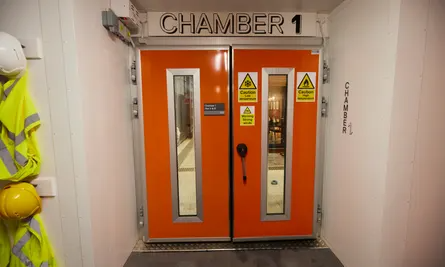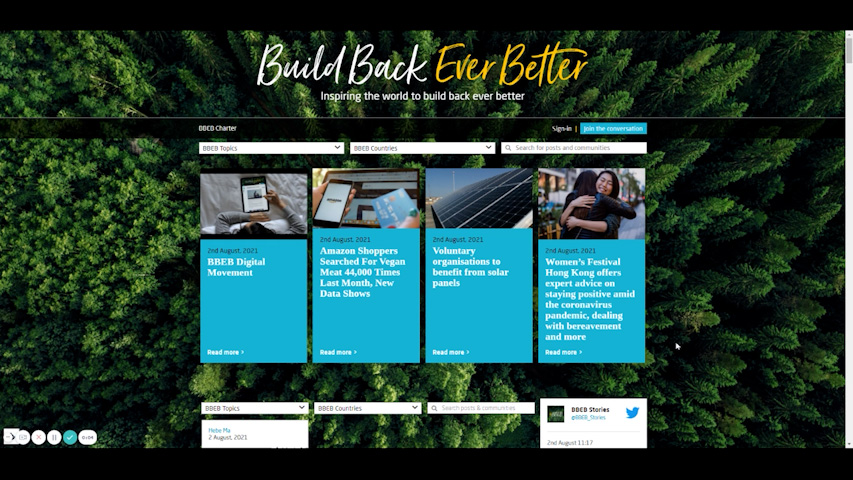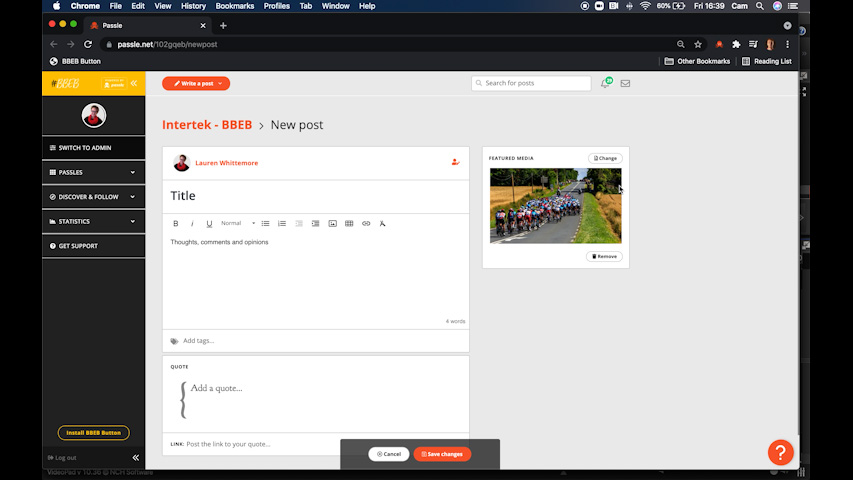Jamie Bursnell, Bellway’s group innovation and technical manager, says it is “treading on new ground here”, with the firm trying to “find the balance between lowering carbon emissions and keeping running costs as low as possible”.

One of the temperature-controlled chambers that contain the houses. Photograph: Christopher Thomond/The Guardian
The main difference between the two houses is that, while the Bellway house is built from “real” bricks, the Barratt one is a timber frame made of 36cm-thick insulation-filled panels covered in a thin cladding that mimics a brick finish.
The timber-frame house would secure a coveted A rating on an energy performance certificate, and Oliver Novakovic, Barratt’s technical and innovation director, says if you wanted to get the same energy efficiency in a traditional build the walls would need to be 55cm thick.

The detached houses withstand a variety of weather conditions, with temperatures ranging between -20C to +40C. Photograph: Christopher Thomond/The Guardian
Two competing heating systems are being tested inside: an electric-based system utilising infrared panels, some of which are disguised as ceiling coving, as well as a water-based system that uses heated skirting boards combined with an air source heat pump.
“As we put these really warm coats on to our homes, we don’t need as much energy to heat them,” says Novakovic. “So the big question we’re asking is, do we do it with heat pumps and hot water or with electricity?” Experts will examine how houses can work in tandem with the electric car parked outside, for example storing energy produced by solar panels in the vehicle’s battery.
The university is also home to the original Energy House project, which built an early 20th-century two-up, two-down terrace house inside an environmental chamber to test retrofit technologies.
Prof Will Swan, the director of Energy House Labs at the University of Salford, described Energy House 2.0 as a “critical” piece of new research infrastructure.
“The growing challenges of climate change and the cost of living crisis mean we need to consider how we build and operate our homes,” says Swan. “As the cost of gas and electricity keeps going up and up this work is even more important to create a sustainable and economically viable future for this country and the world.”
I hope you appreciated this article. Before you move on, I was hoping you would consider taking the step of supporting the Guardian’s journalism.
From Elon Musk to Rupert Murdoch, a small number of billionaire owners have a powerful hold on so much of the information that reaches the public about what’s happening in the world. The Guardian is different. We have no billionaire owner or shareholders to consider. Our journalism is produced to serve the public interest – not profit motives.
And we avoid the trap that befalls much US media – the tendency, born of a desire to please all sides, to engage in false equivalence in the name of neutrality. While fairness guides everything we do, we know there is a right and a wrong position in the fight against racism and for reproductive justice. When we report on issues like the climate crisis, we’re not afraid to name who is responsible. And as a global news organization, we’re able to provide a fresh, outsider perspective on US politics – one so often missing from the insular American media bubble.
Around the world, readers can access the Guardian’s paywall-free journalism because of our unique reader-supported model. That’s because of people like you. Our readers keep us independent, beholden to no outside influence and accessible to everyone – whether they can afford to pay for news, or not.
















